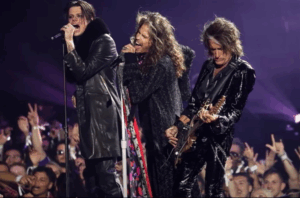These 6 Pink Floyd Facts Will Blow Your Mind
Hey You!
Pink Floyd is probably one of the most creative and poetic band of all time. Plenty of analysis has been made on their songs’ meaning and representation and that perhaps speaks volumes about the band’s mysterious allure. Nevertheless, while you possibly already know where they got their name, here are other lesser-known facts about this legendary group.
6. They hired someone full-time to say “NO” to Interviews
Remember the legendary 1972 concert documentary film where Pink Floyd performed at the ancient Roman Amphitheater in Pompeii? There wasn’t really much to it – they were doing what other bands have already done which was to record a live set. But the thing is, with this one, they didn’t have any audience. It was directed by Adrian Maben. During one interview, he was asked about Pink Floyd being distrustful to the press especially at the peak of their career. In the ‘70s, unlike other groups, there weren’t any interviews and they hardly appeared on television. In fact, according to him, it’s gotten to a point when the band hired someone whose sole job was to say ‘NO’ to anyone asking for interviews or requesting talk show appearances. It was Roger Waters who revealed that to him. Adrian further said, “Of course, the more they refused an interview the more the press tried to get to them… This was the Pol Pot quality of the Floyd: remain unseen, enigmatic, don’t let anyone know who we are.”
5. A Studio Doorman Recorded One Of The Most Iconic Lines Of The Album

‘Dark Side of the Moon’ is the band’s most commercially successful album with sales of about 45 million copies. Their music was now way headier and sturdier than during the Syd Barrett era. The complexity was astounding and when it was released, it became clear that it was Pink Floyd’s magnum opus. During the recording sessions, they also made use of the most advanced studio techniques that existed at the time. It was musically complex to the truest sense of the word.
One notable feature peppered throughout the album is the use of snippets of voices. Roger Waters recruited roadies, studio staff, members of the band Wings (even Paul and Linda McCartney participated) and basically anyone currently in the Abbey Road to participate in the recording by asking questions he had written on the cue cards. They were placed in front of the microphone to ask things like “When was the last time you were violent and were you in the right?” Gerry O’Driscoll, the studio doorman, gave one of the most unforgettable responses when he said during the closing, “There is no dark side in the moon, really. As a matter of fact it’s all dark.”
4. Goes Perfectly With The Wizard Of Oz- It’s Kinda Scary

The ‘Dark Side of the Rainbow’ (also known as ‘Dark Side of Oz’ or ‘Wizard of Floyd’) refers to the alleged unintentional synchronization of the ‘Dark Side of the Moon’ with the 1939 ‘Wizard of Oz’ film. Although Pink Floyd denies any purposeful collaboration and even shrugs it off as a mere coincidence, there are certain parts of the album and movie that seemingly appear to correspond to each other.
You can actually test it yourself with the MGM lion roar as the cue. You have to reduce the movie’s audio and may need to rely on the subtitles. Some thematic alignments include the scarecrow dance just in time for the ‘Brain Damage’ track. According to the album’s audio engineer Alan Parsons, “One of the things any audio professional will tell you is that the scope for the drift between the video and the record is enormous; it could be anything up to twenty seconds by the time the record’s finished. And anyway, if you play any record with the sound turned down on the TV, you will find things that work.”
3. One song was a deep tribute to a fallen member

The epic psychedelic track “Shine On You Crazy Diamond” uses the letters of Syd Barrett’s first name for the title. He used to be the creative force behind Pink Floyd but he was dismissed from the band after massive drug use and mental illness. He was getting unpredictable and sometimes, he would stare into space during their recording session. He was a great songwriter and while they would have wanted him to keep on writing for them, his arrangements became way too complex for them to play. While working on their ‘Wish You Were Here’ album, Barrett’s tortured spirit hung over the other members. The aforementioned song was mainly centered on the theme of isolation. In fact, when he crashed one of their sessions, the band was so shocked to See Barrett (who was now heavyset and with shaved head and eyebrows). Rumors had it that Roger Waters was moved to tears after barely recognizing him.
2. There are two meanings behind this song.

After Roger Waters left in 1985, David Gilmour stepped up to the plate of leading Pink Floyd. Their biggest hit post-Waters is ‘Learning to Fly.’ Metaphorically, this was the summation of Gilmour’s feelings of being the current creative force of the band and filling the shoes Waters left. It was the start of something new. But when you look at it literally, at the time, Gilmour was actually taking flying lessons. Not everyone may know it but flying has always been one of his passions (aside from writing memorable melodies, of course). He’s a licensed pilot with multiple ratings. Drummer Nick Mason is an avid pilot too! One on interview, he confirmed both meanings when he said, “’Learning to Fly’ is about breaking free and the actual mechanics of learning to fly an airplane.” While we can all agree that Waters was once the thematic mastermind, we can’t discount the fact that Gilmour is one of the most talented musicians in rock.
1. Some kids sued for royalties.

‘Another Brick in the Wall (Part 2)’ is mostly popular for the mind-blowing bass lines and edgy guitar solo. But another key feature is the choir of schoolchildren during the second verse of the song. Producer Bob Ezrin sent recording engineer Nick Griffiths to Islington Green School and he approached the music teacher Alun Renshaw about the choir. The school received a total payment of £1000 without any arrangement regarding the royalties. But a Scotland-based royalties agent Peter Rowan tracked down the kids and demanded that they get paid and even filed a legal claim. He wanted ₤6,000 ($11,650) for the 23 children who participated in the recording. It was difficult for him to find them at first because the headmistress didn’t know about the students singing in the album and forbade the schoolchildren from appearing on radio or TV shows. He represented former student Peter Thorpe but the others weren’t the least bit interested.

















